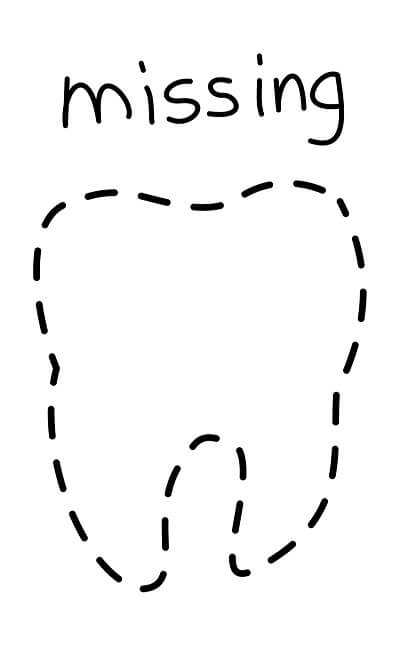When missing a tooth, many people don’t consider the consequences to their oral and even overall health that not replacing it can cause. The truth is, that the consequences can be dire if not addressed in a timely fashion.
Let’s discuss a recent example that came to our office recently.
I Just Wanted to See Why My Gums Hurt
I met so many delightful new patients this past week. I had a hard time deciding which one to focus on today. My article will talk about the mother of one of my patients.
In the past, I saw her daughter and relieved her pain utilizing a root canal technique. “Mom” came to me because she liked our office and how we treated her daughter. That being said, we do not take her style of insurance, and she went to a large corporate setting to find out why her gums hurt.
When she came to me, she showed me a proposal for over $6000, and her gums were low on the totem pole. I addressed her gum issue, and we discussed the treatment for that problem. I also allayed her fears about the gums. Once she felt better, I began a conversation regarding the rest of the proposed treatment, which had caught her off guard.
Issues Born of a Failure to Replace Her Missing Tooth
On her right side, the lower first molar is not there. The missing tooth did not bother her, and she never replaced the tooth. She pointed out that she was told that the tooth above the missing space had a cavity. The cavity was so bad that removal of the tooth was part of the proposal for treatment. She sought my opinion on the rest of the work.
An Uneven Occlusal Plane
The tooth in question did not appear to have any decay. However, that tooth was hanging down. If you look from the side, which none of us can do in our own mouth, the tooth looked like an upside-down camel’s hump. The tops of teeth should flow in a relatively straight line as we look from tooth to tooth. The imaginary line is called the occlusal plane in dentistry.
The most efficient form of chewing with the slightest trauma to the mouth occurs when the occlusal plane is straight.
Crooked or uneven teeth create excess forces on the teeth that they meet when chewing. Breakage and discomfort could occur.
Food traps, Bone Loss & Infection
Another advantage to teeth being even is the lack of food traps. Food traps are areas in the mouth where food will lodge easily after eating. These spots are difficult to see and even more challenging to clean. Brushing and flossing are not easy to do in general. When you add misaligned teeth, the problem magnifies. In our case, there was nothing below this uneven tooth. So what is the problem with this tooth position?
The food that collects around these teeth becomes a full course meal for the bacteria that reside in your mouth. Cavities can occur as the bacteria exude acid.
I said above that my patient did not have decay in this area.
One reason that she did not have decay is since the tooth had a crown. The crown protected her tooth from a cavity. However, the crown did not protect the tooth from downward movement, bone loss, and infection in that area. The tooth was loose due to the bone loss that was present.
Her only treatment option involves removing the tooth and stopping the bone loss and infection present in that area.
In Conclusion
I can not emphasize enough the importance of tooth replacement in case you lose a tooth. When you do not replace a tooth, you start to descend a slippery slope with no good outcome. If this sounds like you, call Nikki or Cat at 440.951.7856 and let them set up a time to talk with me.
I look forward to meeting you.
Jeffrey Gross, DDS, FAGD, is an Ohio-licensed general dentist and is on the staff of Case Western Reserve School of Dental Medicine.

